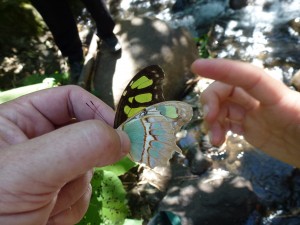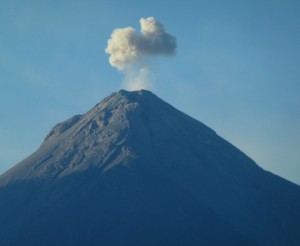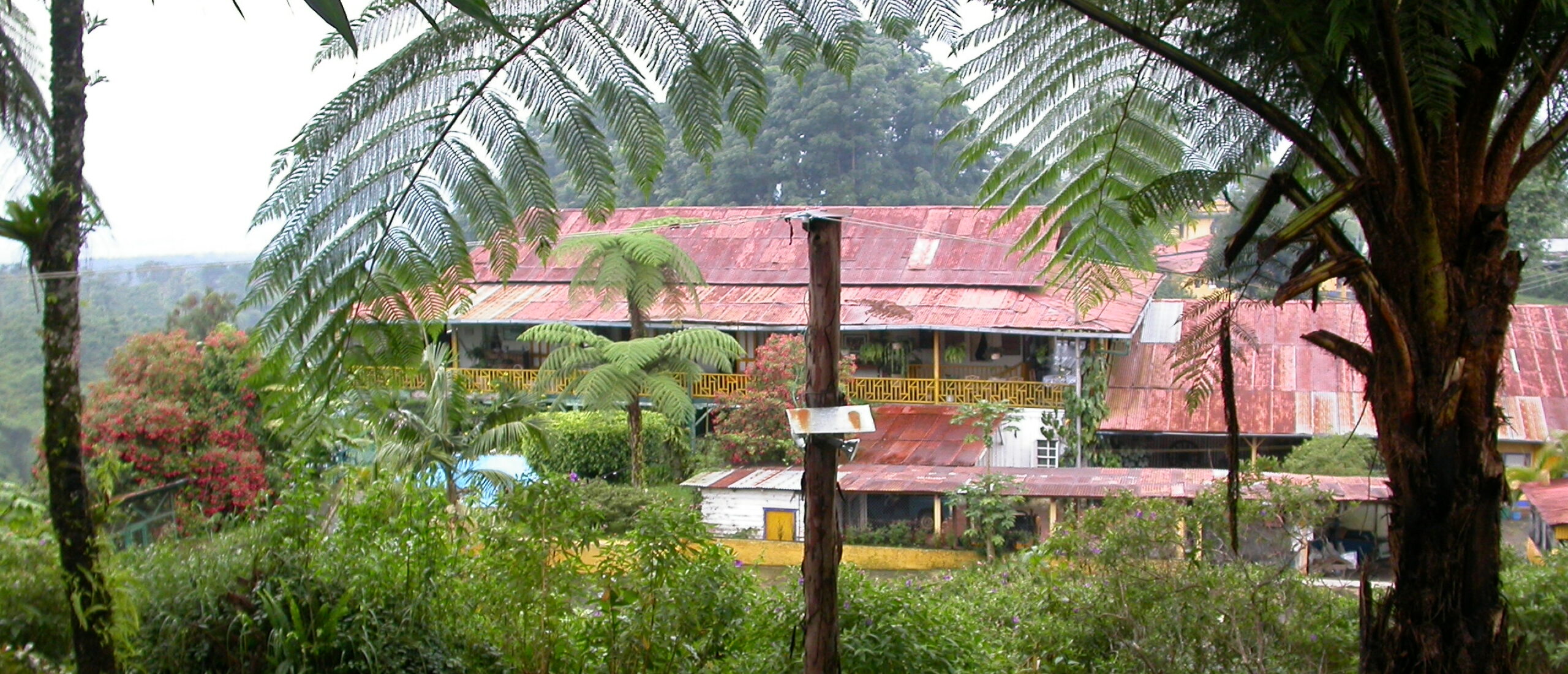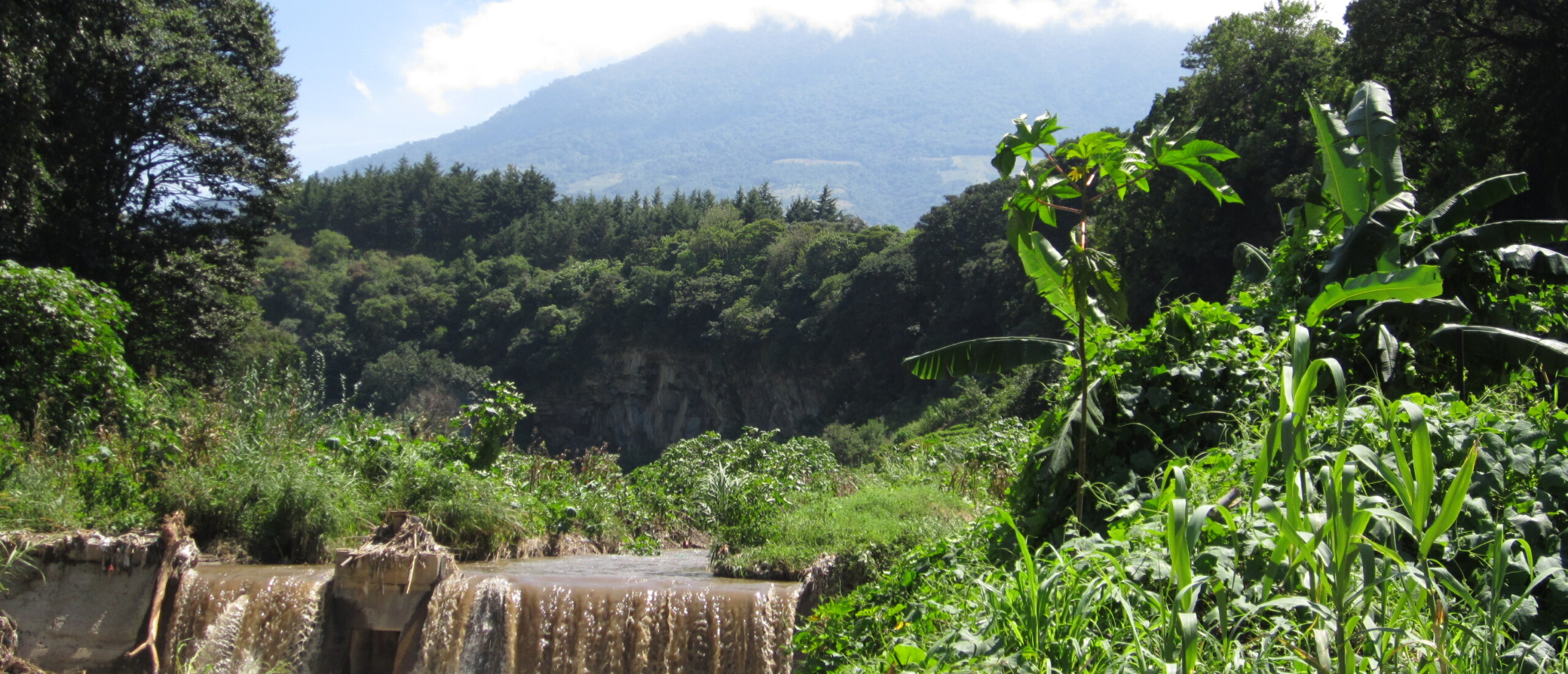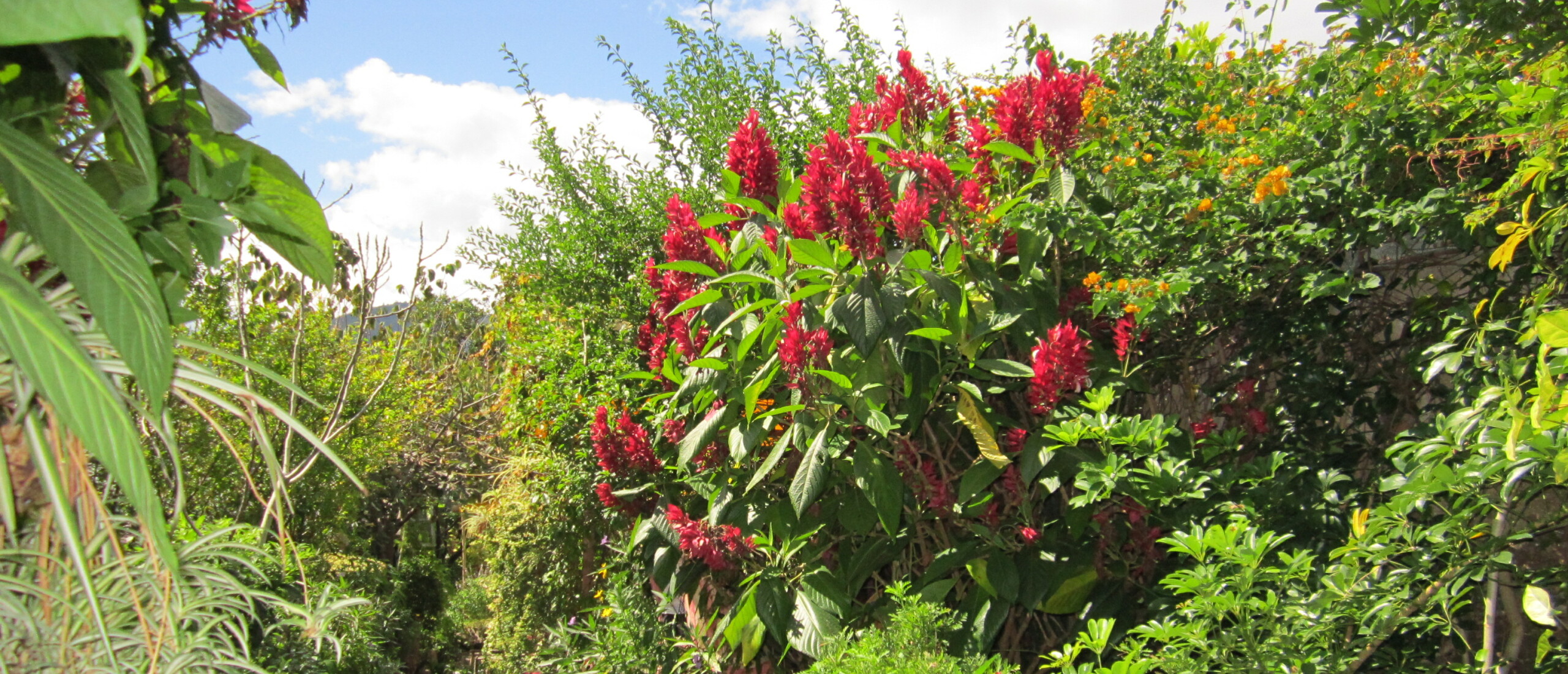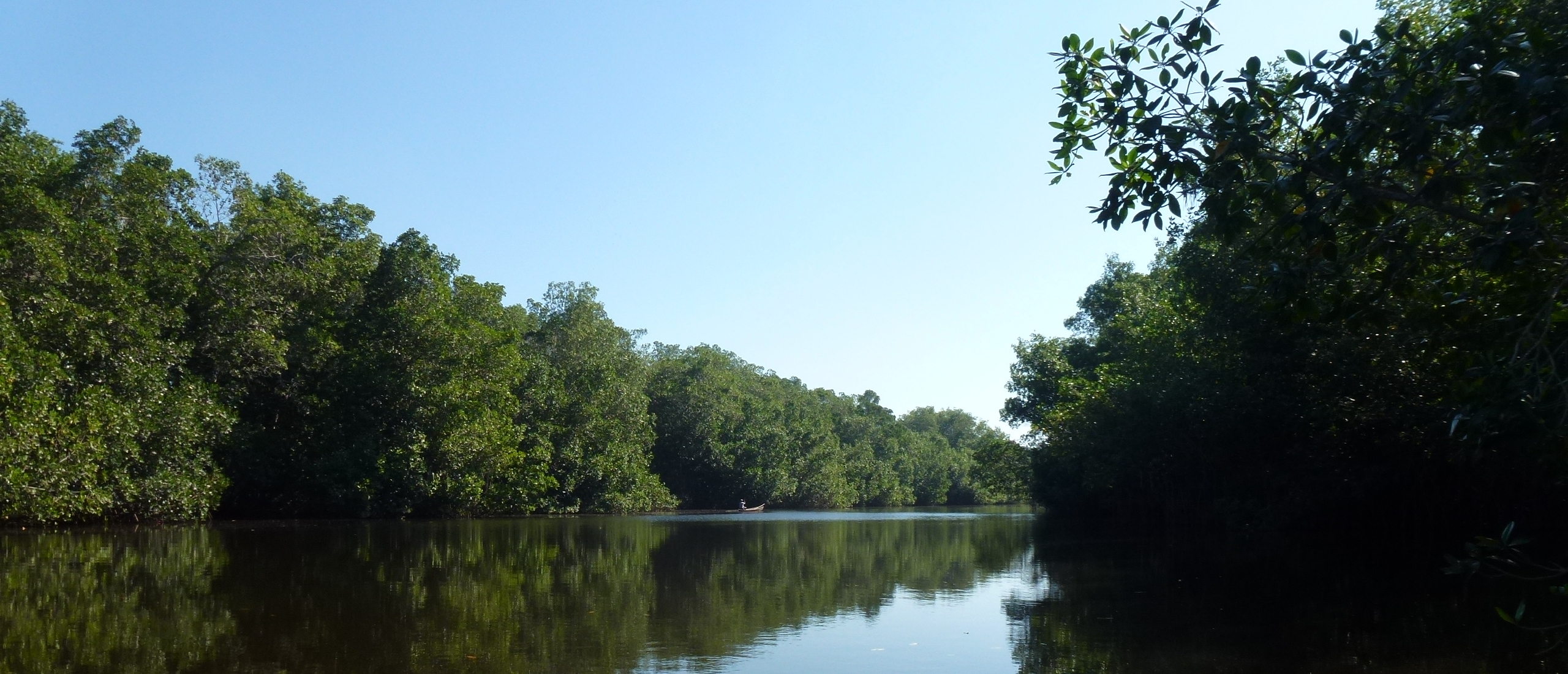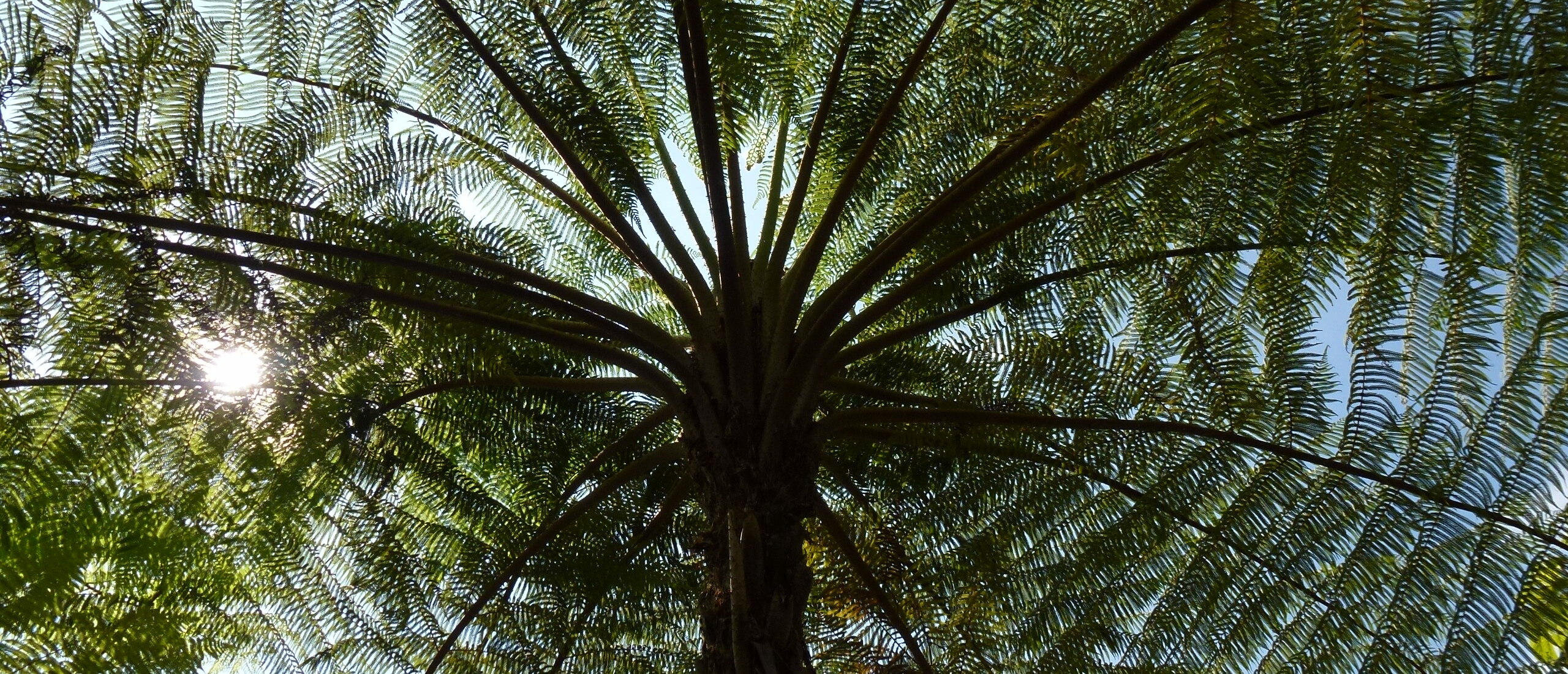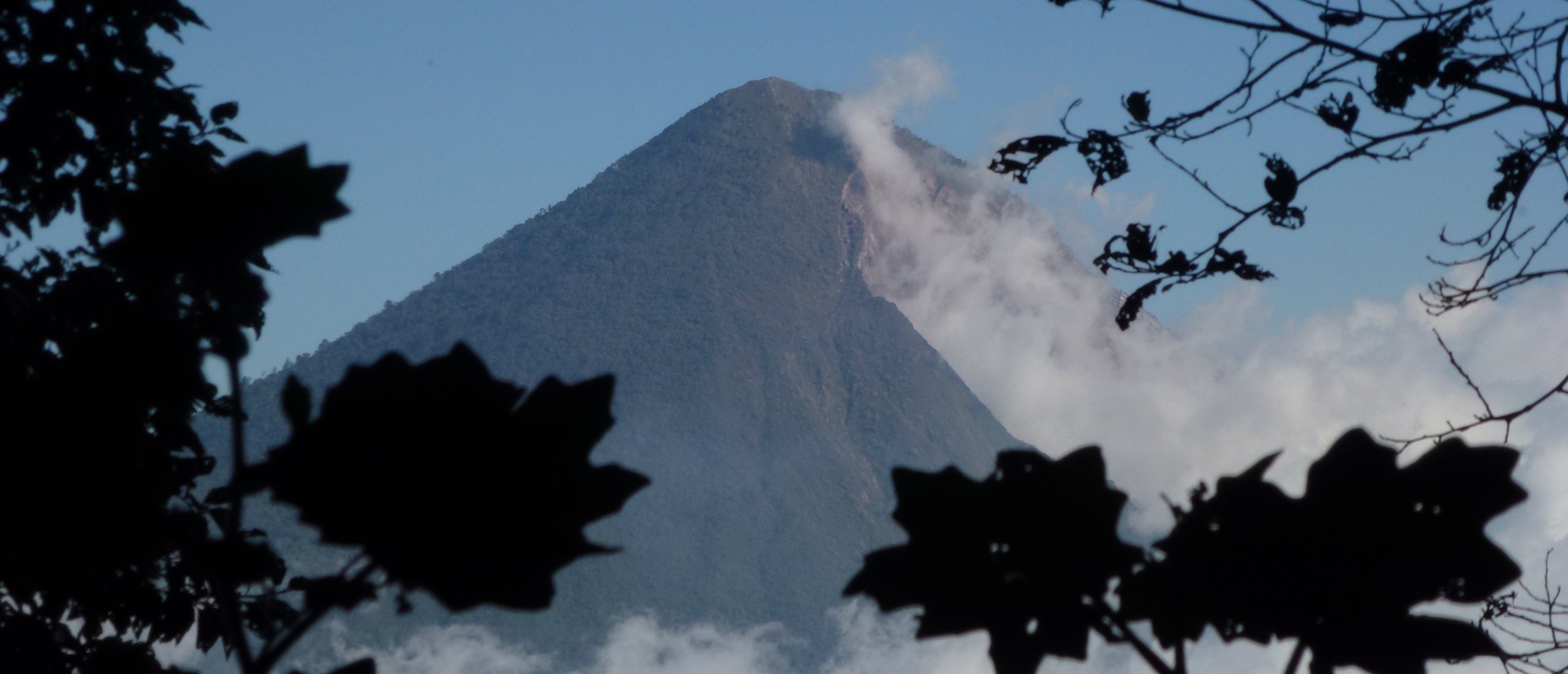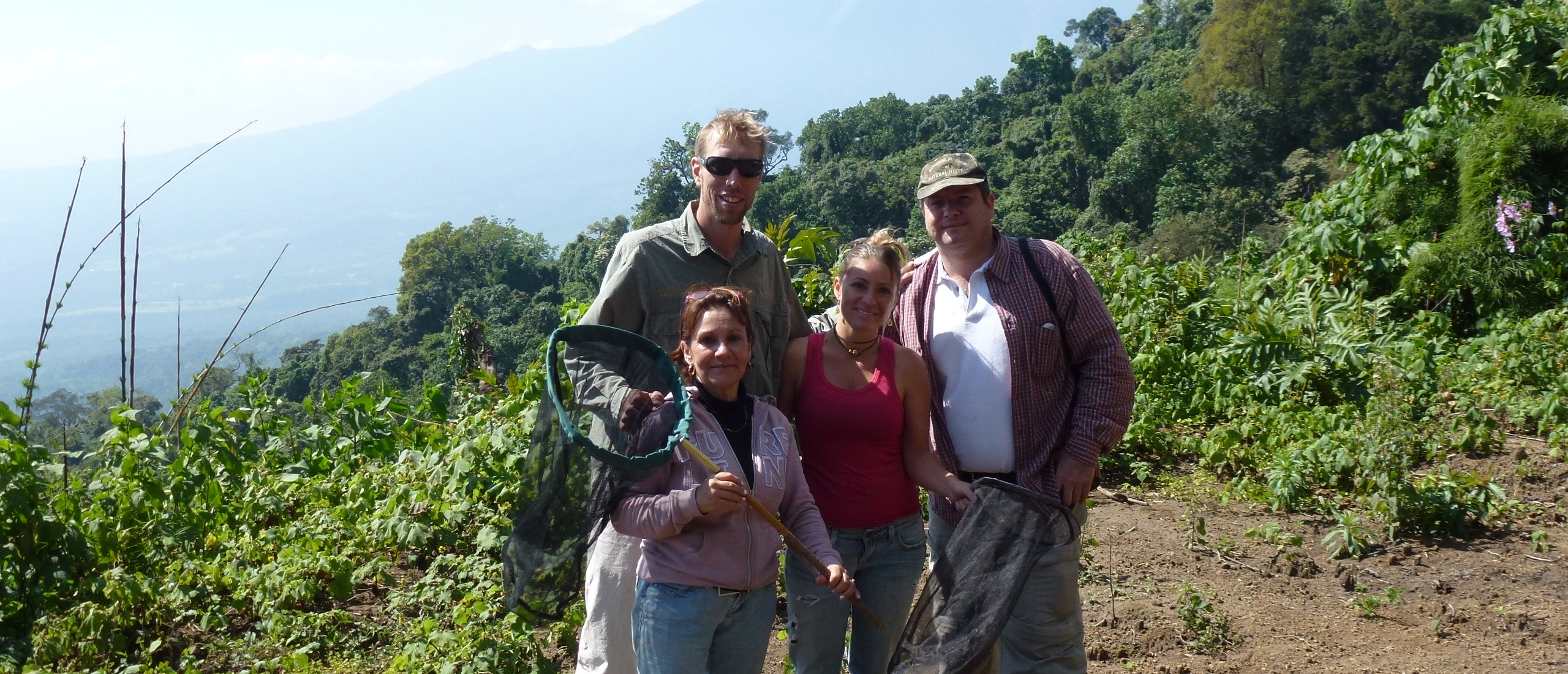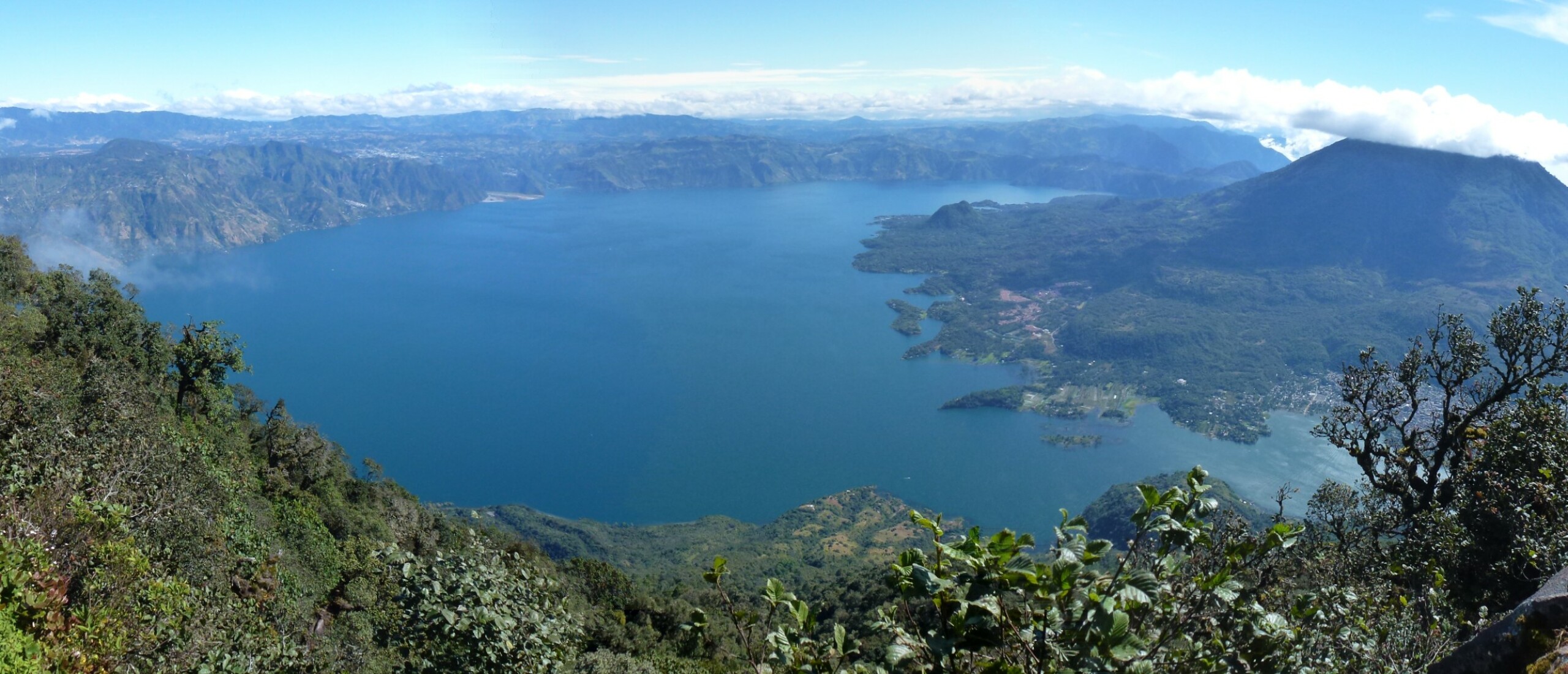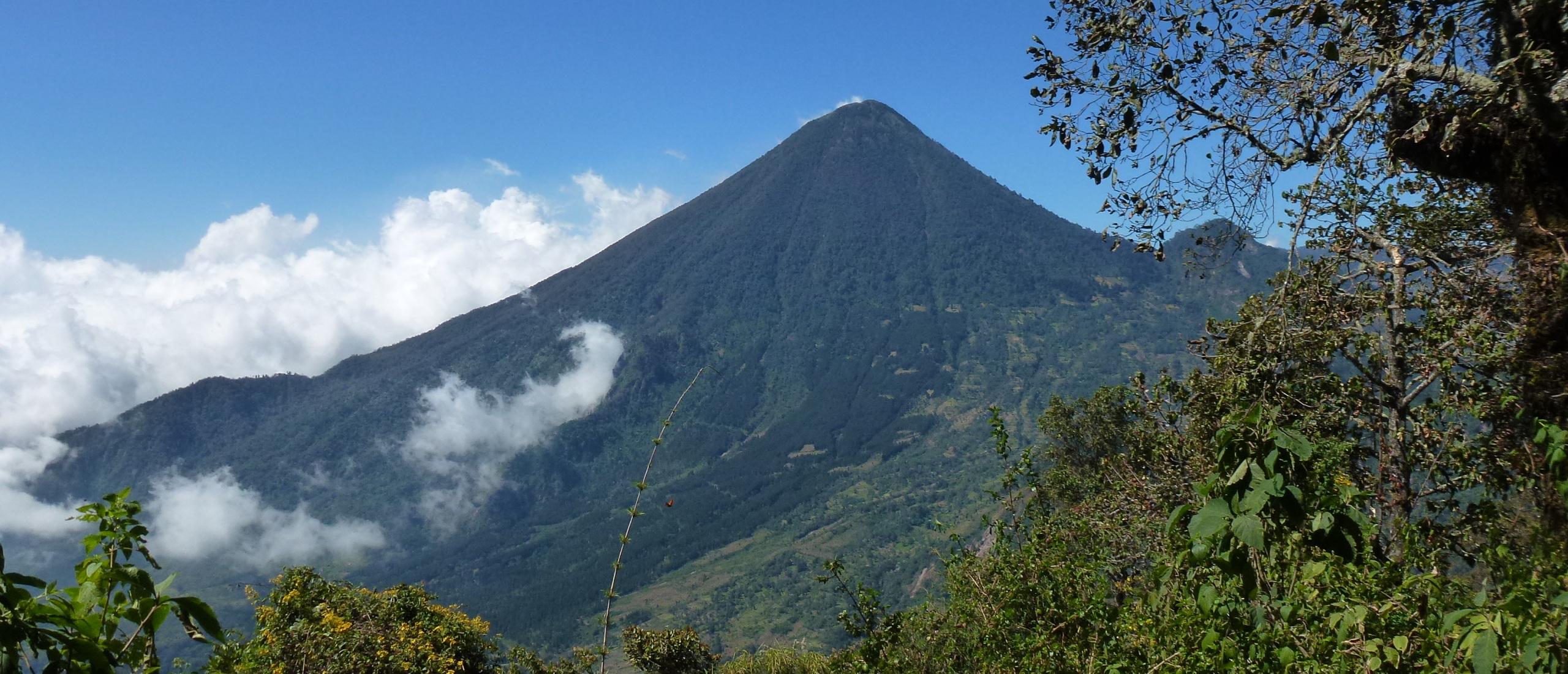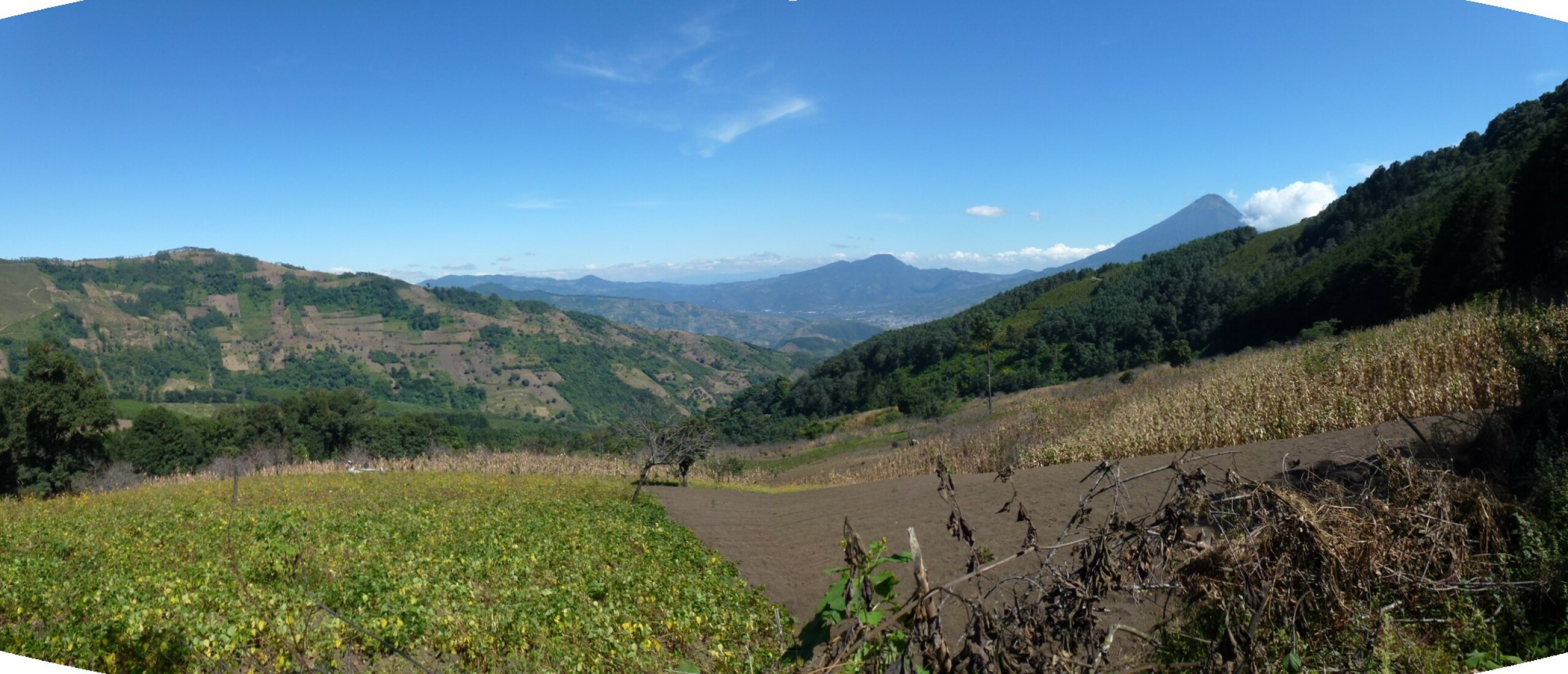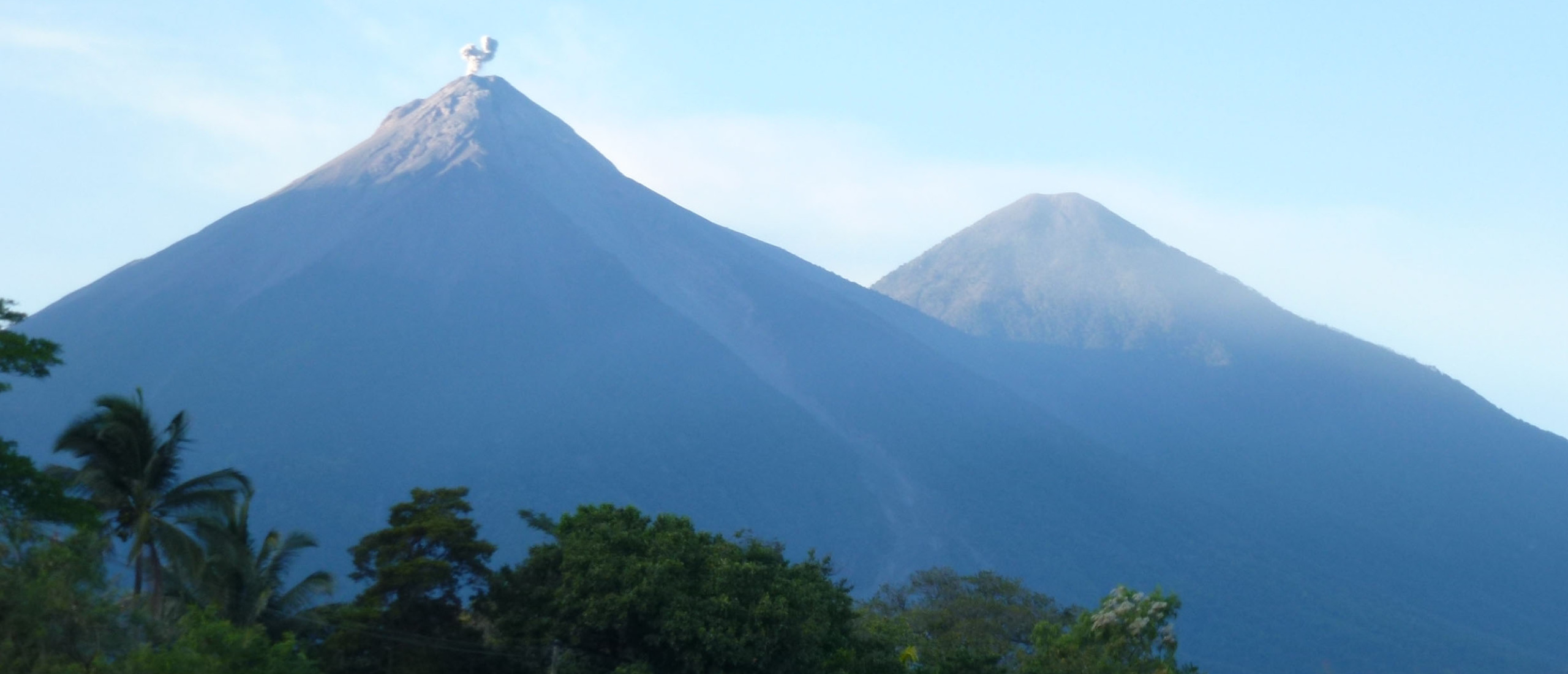
¡Tepezcuintle endrucinado con salsa de championi! Today’s diary entry title is a spoof dish in a restaurant, incorporating the generic and specific names of our so dearly-wished-for butterfly, Drucina championi, combined with the delightful name of a rodent that is sometimes eaten here in Guatemala, the tepezcuintle, or paca (Endrucinated paca (an edible rodent) with championi sauce). Today was intended to be another desperate Drucina-search, but we ended up at the wonderful coffee finca and bird reserve of Los Tarrales, in the lower foothills of the Pacific slope – too low for Drucina, which probably only occurs above 1500 metres; Los Tarrales is situated at only 800 metres. Nonetheless, despite the absence of Drucina, we saw plenty of other spectacular butterfly species, as well as some impressive birds. This episode actually begins yesterday, when Luisa and I set off from Antigua in the trusty (and by now very dusty!) Nissan Sentra, dropping first down into the tropical Pacific lowlands, before heading up again from the busy and chaotic junction of Cocales, where seemingly innumerable roadside vendors try to sell coconuts to passing travellers. Our route took us through the even more chaotic, dirty and ugly town of Patulul, where we were absolutely deafened by a van advertising a circus, with its message blaring out into our faces. This aural onslaught only served to confirm my dislike of circuses! Shortly after we had finally escaped the horrors of Patulul, we turned off the main road into the private reserve and coffee plantation of Los Tarrales, where we made inquiries about the possibility of engaging a guide to take us high up into Drucina territory this morning. Unfortunately, we were informed that all the guides would already be busy with other groups today, so we continued on our way up towards Lake Atitlán, where we intended to stay the night. This time, we did not stay on the north side of the lake, but rather turned off the road into the less touristy town of San Lucas Toliman, in the south-east corner of the lake, and from where my great grandfather took a canoe across the lake to Panajachel in December 1880. We had not reserved accommodation, but soon found the Hotel Toliman, with its attractive gardens and lake view, where we checked in and immediately ordered a very late and much needed lunch on the terrace of the restaurant, which commands a panoramic view of the gardens, at treetop height. It was not long before birds appeared, including a flock of Yellow-winged Tanagers, a Tropical Kingbird and a Lesser Goldfinch in the same bare tree, and a cobalt-blue Red-legged Honeycreeper, which particularly impressed Luisa. After “lunch” (it was already 16.00), we walked along the lakeshore to the east, passing a somewhat polluted bay in which an old lady was washing her clothes with soap, leaving a bluish cloud in the lake’s waters – Atitlán is still clean compared to the truly filthy Lake Amatitlan, but they will have to work hard to keep it so. During this walk, Luisa set about organising a guide for us for today, and after a few calls, it was arranged that Juan Diego would meet us at the hotel at 08.00 this morning, and that we would try to hunt for Drucina. This morning, after a minor panic when Luisa lost the key to her hotel room (I was secretly delighted, as she had joined the club started by Jacqueline and me!), but then found it in the lock, we set off. Ironically, we started at almost the correct altitude for Drucina, but we were informed by Juan Diego that attempting to hike up the Volcán Atitlán from that angle would be unwise – he himself, together with the children of the owners of the hotel Casa del Mundo, where we had stayed a few days ago, had been assaulted and robbed on the volcano in this area, so we decided against tempting fate. The only viable alternative we could think of was to descend to Los Tarrales, and to try to walk up from there. We started driving down the hill again, the temperature rising perceptibly as we dropped. At one point we stopped at an amazing place, the “Paso misterioso”. Here, an optical illusion gives you the impression that you are going uphill, but if you switch off the engine and let the car go, in fact you roll forwards, because in reality you are going downhill. An exactly similar phenomenon, known as “The electric brae” can be experienced near Maybole, in Ayrshire, Scotland, not far from our home. We tested it, and indeed it worked! Finally, we reached Los Tarrales, and despite the fact that we had not reserved, the staff there arranged a birding guide, Aron (Aaron?), who would accompany us and show us the trails. Sadly, we were informed that it would not be possible to hike up to the right altitude for Drucina…but with the help of Aron’s excellent spotting skills, we nevertheless ended up seeing a great number of interesting things. We started off by visiting a huge pile of fermenting coffee husks, some of which we collected as extra bait to add to the beer, anchovies, sardines and tinned mussels, plus over-ripe pineapple, that we had already obtained, in the hope of using it to lure Drucina championi, a species that does not visit flowers, but rather sucks moisture and minerals from foul-smelling objects such as dung, dead animals and other such delights – all Champions have good taste! From here we started walking along the track leading gradually up towards the volcano, which towered above us, but sadly out of reach. Many butterflies were flying, but it was when we reached a stream that I saw to my horror that the only means of crossing was by balancing one’s way across on a log that had been positioned to act as a bridge – I hate that kind of bridge, and I immediately feel unsteady. Here, however, because there were several interesting-looking butterflies on the far side, I did not seem to find it difficult, and in fact I ended up crossing back and forth more than eight times without giving it a second thought.
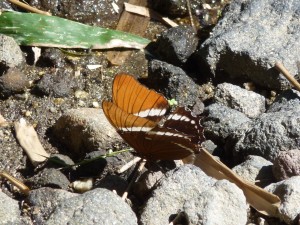 Rusty-tipped Page, Siproeta epaphus
Rusty-tipped Page, Siproeta epaphus
Feeding on the moisture at the edge of the stream was the lovely butterfly the Rusty-tipped Page, Siproeta epaphus, which we admired for a while, but our attention was soon drawn to an incredibly fast-flying grey and white “butterfly” that kept shooting by, landing briefly and then shooting away again. I made a few attempts to catch this insect, which flew like a butterfly, had clubbed antennae (one of the main features separating butterflies from moths), and generally had a butterfly-like “jizz” (a word used by birdwatchers meaning a combination of shape, habits, posture, and various other features that combine to aid in identification, but which one cannot easily put one’s finger on). Finally, one landed and I was able to swipe it with the net. We took it out to photograph and examine it, and compared it with everything we could think of in the butterfly book, but there was nothing even remotely resembling such a creature. It was only this evening, coincidentally using the illustrations from the Biologia Centrali-Americana, the multi-volume work of which my great grandfather George Charles Champion was Chief Editor, that I managed to identify it as a moth, Castniomera atymnius futilis, from the family Castniidae. This amazing insect is an illustration of just how closely allied butterflies and moths can be – this moth could so easily be mistaken for a butterfly.
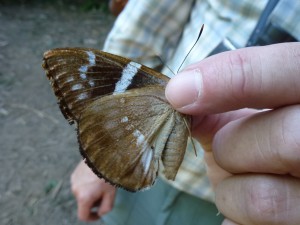 Castniomera atymnius futilis, an increbibly butterfly-like moth
Castniomera atymnius futilis, an increbibly butterfly-like moth
Although it was hard to drag ourselves away from this very productive spot, we eventually wandered on, passing through groves of enormous bamboo; this was sadly not the species that is linked to Drucina, and anyway we were too low. We continued our walk, the temperature at this low altitude quite warm and the mosquitoes becoming more and more active as we went. Finally, we reached the finca’s private hydro-electric plant, from where we turned and retraced our steps. Suddenly, among the ever-present circling Black, and to a lesser extent, Turkey Vultures, Aron managed to spot and point out a larger black and white bird with an apparently red head – a King Vulture. This bird, now rare in Guatemala, was a first for Luisa and Juan Diego (who was really developing an enthusiasm for both birds and butterflies), and a new species for my Guatemalan list, and we admired it circling effortlessly with its smaller cousins. Elated at this success, we moved slowly back along the trail, until at one point a long-tailed bird shot across the path, and disappeared into thick undergrowth below the track. Blue-crowned Motmot, announced Aron, and incredibly, he managed to relocate it, sitting quietly on a low branch, hiding in the thick vegetation. Finally, I managed to get it into the telescope view, and we were all able to observe it, and to even see its incredibly long, partly bare-shafted tail feathers with the spoon-shaped lobes on the end – nobody knows even to this day whether motmots create these lobed spoons at the end of their tails, perhaps by plucking the filaments off on the upper parts of the feathers, or whether they grow naturally.
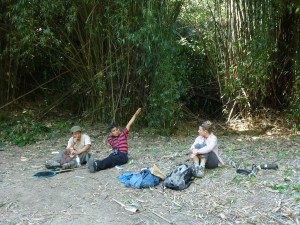 Juan Diego, Aron and Luisa, my 3 guides!!
Juan Diego, Aron and Luisa, my 3 guides!!
As we re-approached the stream, Aron suddenly beckoned to us to join him in the stream bed, just below the fallen log bridge. It turned out that he had spotted another amazing butterfly, also a Siproeta, this time Siproeta stelenes, a truly gorgeous insect with semi-transparent green patches on its wings. I caught it by sweeping the net through, following Aron’s instructions; I could not see the butterfly as it was concealed under a leaf. We extracted it from the net, and with me holding it very gently, we were able to examine it great detail – both Aron and Juan Diego, neither of whom had really paid any attention to butterflies before, were amazed to be able to see such a beautiful creature in the hand, and it was nice to able to fire up an enthusiasm in them, and then to be able to let the butterfly go, unharmed.
We also caught a Morpho helenor, one of that truly marvellous family of large, shimmering blue Neotropical butterflies, but it was a much smaller creature that really caught my imagination. This butterfly, taxonomically a member of the family Lycaenidae (the Hairstreaks, Coppers and Blues), yet one would never guess it, turned out to be a Mexican Cycadian, Eumaeus toxea, an entirely new species for me.
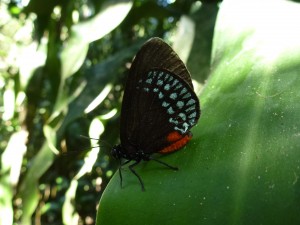 Mexican Cycadian, Eumaeus toxea
Mexican Cycadian, Eumaeus toxea
Finally, we returned to the main central area of the finca, from where we headed up another trail, but apart from a superb Bat Falcon perched high in a tree, we did not see as much on this track. We laid out a few of our odiferous offerings on a bank, in the hope of attracting some butterflies, but although it was more than 40 minutes before we passed by again on our way down, nothing interesting had been lured. And so ended a truly memorable day at Los Torrales. My thanks go of course to Luisa, but also to our two excellent local guides, Aron and Juan Diego, both of whom made great efforts….and I think Juan Diego learned a lot. We made our way back to Antigua, passing below the smoking Volcan de Fuego, plus the magnificent Acatenango and Agua, with the also active Pacaya showing unusually well slightly further away to the east.
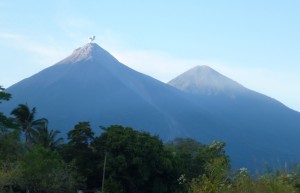 Smoke emerging from Fuego, with Acatenango behind
Smoke emerging from Fuego, with Acatenango behind
The only down-side to the day is that I am now erupting with swellings, each one looking like the volcanoes Fuego AND Pacaya combined, as I react seemingly ever more violently to insect bites…how ironic to be so enthusiastic and passionate about some types of insect, and yet to be the victim of attacks by others!


